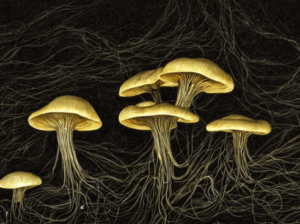In 2020, during the height of the pandemic, I was reintroduced to psychedelics and joined a team that was actively working in the space. This reintroduction significantly influenced my mental health journey. Psychedelics microdosing mental health practices have become increasingly significant.
Psychedelics such as ayahuasca, peyote, and psilocybin have a long history, dating back to ritual ceremonies thousands of years ago. While their popularity surged in the 1960s, research came to abrupt halt when Richard Nixon, the President at that time, outlawed cannabis and psychedelics in a political move designed to control the counterculture movement. However, they are experiencing a resurgence due to their well documented therapeutic potential. I discovered, thankfully, that psychedelics alleviated my treatment-resistant depression (TRD) contributing greatly to my mental health.
What Is Microdosing?
Microdosing involves administering very small amounts of a psychedelic drug, typically ranging from 0.1 grams to 0.2 grams, in order to derive benefits without experiencing the psychedelic effects. Consequently, this practice should be conducted under the supervision of a trained practitioner. Common substances used for microdosing include ketamine, LSD, and psilocybin (magic mushrooms). The effects of microdosing vary depending on the individual and the specific psychedelic substance used. Microdosing psychedelics for mental health benefits is a growing area of interest and research.

Potential Benefits of Microdosing
Research studies have shown that microdosing can:
- Enhance mood and cognition: Psychedelics like LSD and psilocybin interact with serotonin receptors in the brain, subtly modulating signaling. This can lead to mood enhancement, reduced anxiety, and increased emotional resilience.
- Enhance brain plasticity: Psychedelics promote neuroplasticity, the brain’s ability to reorganize and form new connections, by stimulating growth factors like brain-derived neurotrophic factor (BDNF). This could enhance learning, memory, and cognitive flexibility through synaptogenesis, the formation of new synapses.
- Modulate Default Mode Network (DMN): Psychedelics disrupt the activity of the Default Mode Network (DMN), associated with self-referential thinking and rumination. By reducing DMN activity, microdosing may alleviate rigid thought patterns, reduce negative thinking, and foster a more open mindset.
- Boost creativity and problem-solving: Anecdotal reports and preliminary studies suggest that microdosing psychedelics enhances creativity and problem-solving. This may be due to increased cognitive flexibility, divergent thinking, and altered perception, enabling individuals to approach tasks from novel perspectives and make unconventional connections.
Is Microdosing Right for You?
Ultimately, I can’t tell you what you should do; you are the only one who can decide what’s right for you. Nevertheless, before incorporating microdosing into your routine, there are several important factors to consider:
- Consult a healthcare professional: It’s crucial to consult with a healthcare professional, preferably one knowledgeable about psychedelic-assisted therapy. They can assess if microdosing is suitable based on your medical history, medications, and individual circumstances.
- Check legality and quality: Be aware of the legal status of psychedelics in your region. Some like LSD are in clinical trials and may be obtainable legally, while others remain illegal. Obtain psychedelics from a reliable source for purity and quality.
- Learn about dosage: Finding the right microdosing dosage is crucial for desired effects and safety. Begin with a low dose, usually one-tenth to one-twentieth of a recreational dose, and adjust gradually based on your response. Research reputable sources and consult experienced microdosers for dosing guidance.
- Journal your experiences: Keep a journal to track your microdosing experiences and observe changes over time. Record details like substance used, dosage, time of ingestion, and effects or insights. This helps identify patterns, evaluate effectiveness, and provide valuable information for discussions with healthcare professional.
- Be self-aware and responsible: Microdosing is a personal decision requiring self-awareness and mindfulness. Reflect on motivations, values, and goals. Be honest about intentions and approach microdosing with respect, caution, and a willingness to learn.

My Journey
Psychedelics, breathwork, and meditation have transformed my life in the most powerful and beautiful ways. Notably, these have all become an essential part of my everyday practice. Living in the moment has become my way of my default – my mantra is right here, right now! Furthermore, I have worked diligently on loving myself, being more compassionate and I’m looking for ways to connect with myself and spirit. One of the most powerful moments occurred during my journey to self-love in the Amazon.
Connecting with my purpose has allowed me to step into my role as guide, healer, and evangelist. Through education, experience, and science, I have designed an online course that guides people on their microdose journey and establishes practices that will allow them to access their inner healer.
As part of my vision, I have founded a new community called The New Mysteries. We introduce people to ancient practices that create the most amazing life. The microdose course is part of that community. Join us here.

